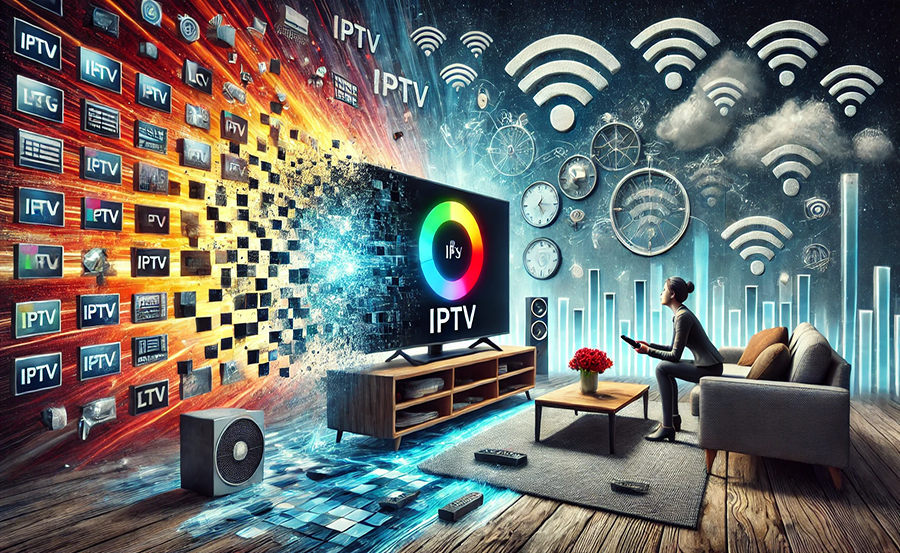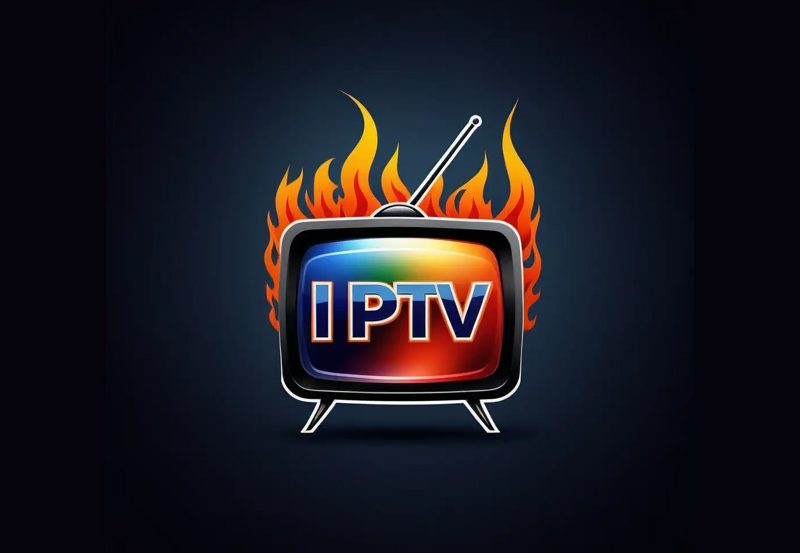How to Optimize Wi-Fi for Smooth IPTV Streaming
In today’s fast-paced digital world, no one wants the frustration of buffering while trying to enjoy their favorite shows through IPTV. Whether you’re new to this technology or a seasoned user, understanding how to optimize your Wi-Fi is crucial for a seamless viewing experience. This guide will walk you through practical steps and expert advice to ensure your IPTV runs smoothly, without interruptions, and enhance your viewing pleasure.
Buy 1 Year IPTV Subscription and Enjoy Unlimited Content
Understanding Your Wi-Fi Network
The Basics of Wi-Fi Technology
Wi-Fi technology has revolutionized the way we connect to the internet, but how does it really work on a fundamental level? At its core, Wi-Fi transmits data using radio waves over specific frequencies. Understanding these basic principles can help you troubleshoot and enhance your Wi-Fi network for smoother IPTV streaming.
Most home Wi-Fi networks operate on either the 2.4GHz or 5GHz frequency bands. Each has its pros and cons. The 2.4GHz band covers a larger area and penetrates through walls better, but it’s also more prone to interference. On the other hand, 5GHz provides faster data rates, which are optimal for streaming, albeit with a smaller range.
Identifying Network Bottlenecks
Experiencing lag while streaming your latest IPTV subscription? The issue might be a bottleneck within your network. Bottlenecks occur when the network traffic exceeds your available bandwidth, slowing down data transfer speeds. Understanding how to identify and eliminate these obstacles is key to optimizing your Wi-Fi for IPTV.
Common bottlenecks can include outdated routers, numerous connected devices, or interference from other electronic gadgets. To diagnose this, consider using network monitoring tools to analyze real-time traffic and identify congestion points. Understanding this aspect can significantly enhance your viewing pleasure.
Optimizing Wi-Fi for IPTV Streaming
Strategic Router Placement
One of the simplest yet most effective ways to boost your Wi-Fi signal is by properly placing your router. The location of your router can significantly impact your network’s performance, especially for IPTV streaming. Consider positioning it centrally within your home to maximize coverage.
Avoid placing the router near walls or metal objects as these can obstruct the signal. Also, keeping it away from electronic devices can minimize interference. Remember, elevation often improves signal strength, so placing your router on a shelf or mounting it high is usually beneficial.
Utilizing Dual Band Routers
If you’re not leveraging a dual-band router, you could be missing out on a major performance boost. Dual-band routers allow you to operate on both the 2.4GHz and 5GHz bands simultaneously, offering more flexibility and the potential for less congested traffic, critical for flawless IPTV streaming.
To make the most of this technology, ensure your devices that support IPTV, like smart TVs or streaming boxes, are connected to the 5GHz network. This can significantly minimize buffering and latency issues, leading to an enhanced viewing pleasure.
Advanced Tips for Wi-Fi Enhancement
Updating Firmware Regularly
Firmware updates for your router may seem cumbersome, but they are vital for maintaining a top-performing network. Router manufacturers frequently release updates to fix vulnerabilities and enhance performance. Regularly checking for and applying these updates can make a noticeable difference in streaming quality.
Most modern routers offer an easy interface to check and install updates. Taking a few minutes to do this every few months is a worthwhile investment in maintaining optimal streaming conditions.
Quality of Service (QoS) Settings
For users seeking a more hands-on approach, Quality of Service settings in your router can be a game-changer. QoS allows you to prioritize traffic, ensuring that services like IPTV streaming have the necessary bandwidth. By configuring QoS settings, you allocate more resources to video streams, effectively reducing buffering.
Accessing QoS settings typically involves logging into your router’s management interface. While the setup process can vary by manufacturer, many offer user-friendly guides to help you through it.
Maximizing the Benefits of Your IPTV Subscription
Choosing the Right IPTV Service
With so many IPTV service providers in the market, picking the right one can feel overwhelming. Here are some tips to ensure you’re making an informed choice. Look for providers known for reliability and minimal downtime. Ratings and user feedback can provide insights into the quality you might expect.
Moreover, consider trial subscriptions to test the service firsthand before committing. Ensure it offers the channels you desire and supports high-definition streaming, all of which contribute to enhancing your viewing pleasure.
Device Compatibility and Setup
Setting up your IPTV on compatible devices is essential for a seamless experience. Whether you use a smart TV, streaming box, or a mobile device, each comes with its own setup requirements. Ensure that your equipment supports the IPTV formats and codecs needed for your chosen service.
Most devices will have apps or built-in features to support IPTV. Following installation guides provided by your service or device manufacturer will help streamline this process.
Beyond the Basics: Advanced Wi-Fi Optimization
Wi-Fi Extenders and Mesh Networks
If your home has Wi-Fi dead zones, consider Wi-Fi extenders or a mesh network. These devices can extend coverage and ensure a strong signal in every corner of your home, crucial for uninterrupted streaming.
While extenders are a more affordable option, mesh networks offer seamless connectivity and are great for larger spaces or homes with multiple floors.
Exploring Wired Connections
While Wi-Fi is convenient, for ultimate reliability, a wired connection using Ethernet cables is unbeatable. If possible, connect key devices like your smart TV or set-top box directly to your router. This setup can eliminate network interference and provide a stable connection for IPTV.
For those concerned about aesthetics or home layout, powerline adapters offer an ingenious solution, using your home’s electrical wiring to extend wired internet access.
Getting the Most from Your IPTV Experience
Engaging Support and Community Forums
Experiencing technical issues or seeking ways to optimize your setup further? Don’t underestimate the value of online communities and support forums dedicated to IPTV. These platforms are rich with insights from fellow users and tech enthusiasts.
Engaging in discussions can not only help resolve issues but also introduce you to innovative ways others are enhancing their viewing setups.
Keeping Abreast with Technological Changes
The tech world is ever-evolving, with regular advancements impacting IPTV technology. Staying updated on the latest trends and innovations can help you remain ahead. Consider following tech news outlets or subscribing to relevant newsletters.
This proactive approach ensures that your IPTV setup remains cutting-edge, offering the best streaming experience possible.
A Fresh Outlook on IPTV Streaming with Enhanced Wi-Fi
Optimizing your Wi-Fi for IPTV streaming isn’t just about fixing issues; it’s about transforming your viewing experience into something extraordinary. From strategic router placement to experimenting with cutting-edge network solutions, the steps are within your reach.
Embrace these changes and unlock the true potential of your IPTV subscription, turning every viewing session into a delightful escape where buffering is merely a distant memory.
Frequently Asked Questions

How can I improve my Wi-Fi speed for IPTV streaming?Improving Wi-Fi speed can be achieved by repositioning your router, using a dual-band router, minimizing interference, and ensuring your router firmware is up to date.
What is the best frequency band for IPTV streaming?The 5GHz band is generally preferred for IPTV streaming due to its higher data rates and less interference, although it has a shorter range than the 2.4GHz band.
Are there any settings I should configure on my router for better streaming?Yes, adjusting the Quality of Service (QoS) settings to prioritize IPTV streaming can ensure it receives sufficient bandwidth, reducing buffering and latency issues.
Should I consider a wired connection for my IPTV setup?If possible, connecting your IPTV device directly to the router using an Ethernet cable provides the most stable connection, minimizing network-related issues.
- Can community forums help in optimizing my IPTV experience?Absolutely. Community forums are valuable resources for advice, troubleshooting, and discovering innovative solutions other users have found effective for enhancing their IPTV setups.
Best Practices for Optimizing IPTV Streaming Over Wi-Fi





